
The Vinyl Press - December 2017
System Notes-Austin, 2017
The system components are largely unchanged, but a new room always presents some challenges– this one is long- roughly 31 feet deep and of varying width–from about 11 feet at the front wall behind the speakers, and widening to approximately 14 feet in the listening area, with nine foot ceilings. (Oh, for those high ceilings downstairs- nearly 12 feet, but the rooms just weren’t suitable).
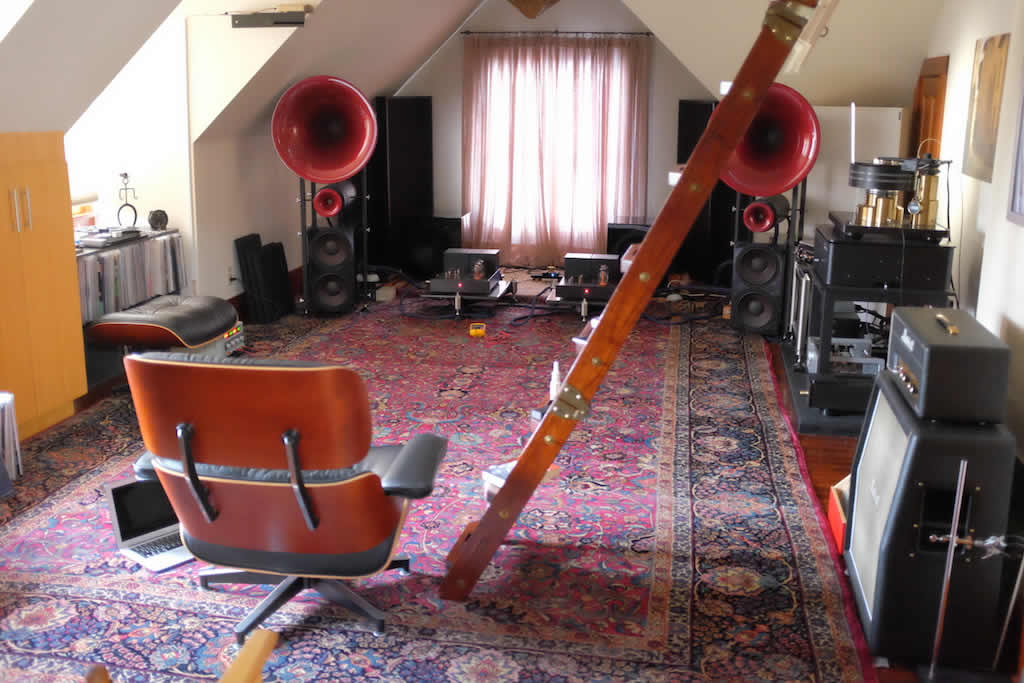
I did add a robust isolation transformer in the backyard– a 10 kVa unit from Controlled Power. It feeds a dedicated panel for the system via 4 gauge feeder lines; four dedicated 10 gauge lines come from the system panel to a series of Porter Ports located in the front and mid area of the room. Grounding ties to the main household Ufer which is part of the foundation. The system is dead quiet, though I think the power here, even without the isolation transformer, is cleaner–newer infrastructure, despite the density of living in what amounts to central Austin. (I’m just south of downtown in the South Congress area- the original “Keep Austin Weird” neighborhood. Don’t worry, they haven’t lost the mojo but I’ll save that for another day).
The wiring was done by a large commercial/residential contractor here and went without a hitch. I was little concerned about the new arc-fault breakers required by Code, but they aren’t as finicky as I expected–obviously, these things have improved since they were first introduced.
The front end is installed on a substantial floor support platform made of two sheets of marine ply with a barn mat on top. Given my worries about footfalls in an old house, I bought a Minus K calibrated for the weight of the Kuzma and associated components, including the HRS platform that the turntable normally sits on.
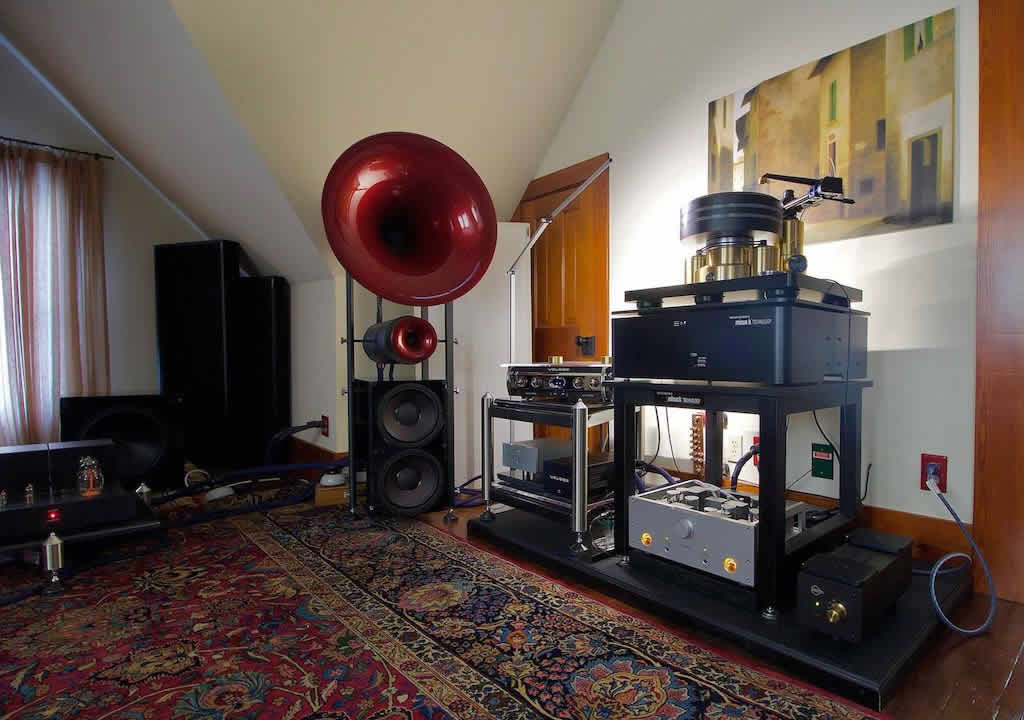
It took a little while to get used to the behavior of the Minus K platform– touch the table and it’s like jello- but I’m now comfortable adjusting VTA while a record is playing. The thing works– no footfall issues, and it sounds fine– no discernible loss of the qualities that make a top tier vinyl front end a thing of wonder with a good recording.
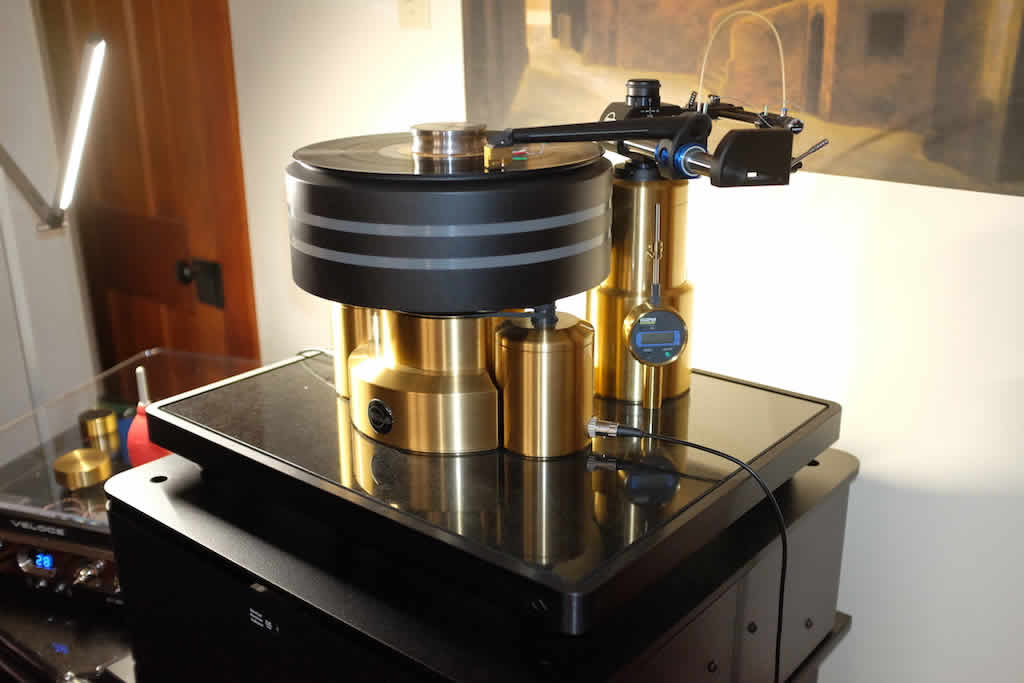
Everything else – the phono stage, the line stage and their respective power supplies along with the motor controller fit on the reinforced platform. I aimed the line stage at an angle so I can use the remote and see the gain display easily from my listening seat.
The Allnic phono stage tucked perfectly under the turntable stand- a serious piece of welded steel with a phenolic top supplied by Minus K:
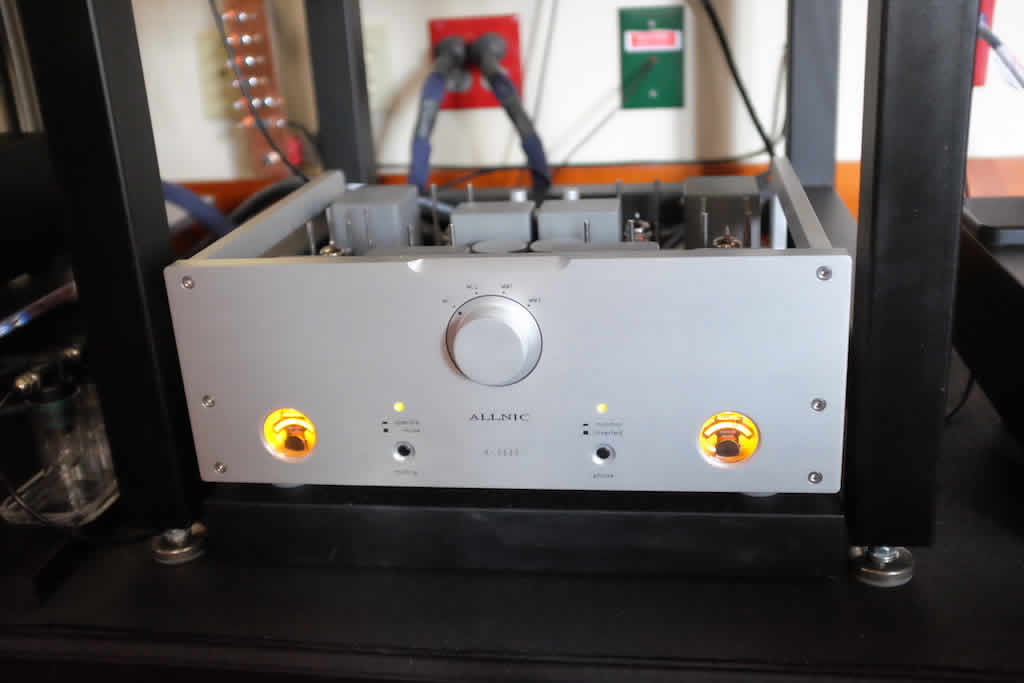
Though there’s lot’s of room for record storage, I also use an adjacent room (the “office”) for record storage. I brought somewhere over 5,000 LPs to Texas, but that number has grown since I arrived. Here’s the back wall, behind my listening position:
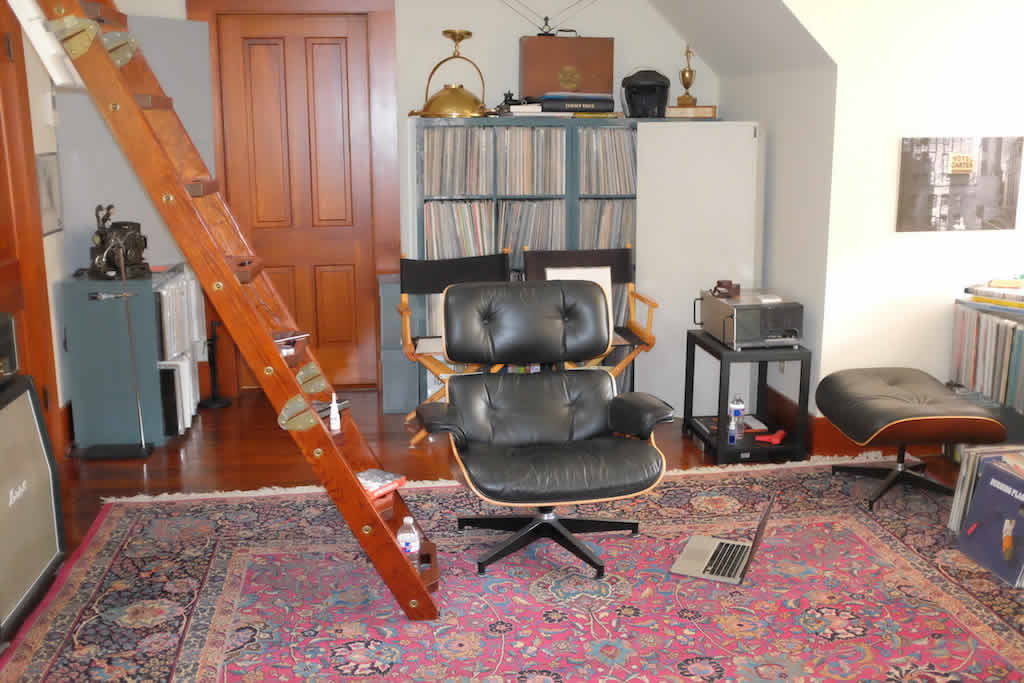
That ladder, as mentioned elsewhere, leads up to a widow’s peak on top of the house. I can fold it up into the ceiling, but I like it in the “down position”- I get diffused light through a plexiglass marine hatch and use the ladder steps as shelves for the remote control and pocket litter.
The Airline arm is fed by a 1/2 HP Sil-Air compressor with a 6 gallon tank- I got rid of that monster 1 HP, 13 gallon one- it was simply overkill. Rather than worry about finding a closet or room to isolate it effectively, I had a silencer box built to my specification by a local contractor. As the Brits say, “It works a treat”- the thing is dead silent, being lined with mass loaded vinyl and melamine sheets, double layers of particle board with green glue and is probably close to 175 lbs without the compressor installed:
It is fan cooled with some nifty temp controlled fans from the folks at AC Infinity that can be easily reversed to act as intake or blowers with a central brain and probe. The thing fits perfectly beneath the utility table in the record cleaning area:
The cleaning area is smaller than the entire room I had in New York, but I’ve learned how to use the space effectively; I store extra fluids, water and supplies in the cabinet under the stainless table top or in the nearby “office.”
I had been experimenting with subwoofers to augment the Avantgarde woofers and once I arrived in Austin, put in a call to Brian Ding at Rythmik, located here, who supplied me with a pair of 15″ sealed subwoofers. I use a small DSP to help even out some of the bass response, and set up the woofers to roll off at 55hz with a steep 24db/octave slope. Some tuning to get them to blend into the Avantgarde woofers leaves me with a pretty seamless presentation- I need the additional ‘oomph’ for this room, and the woofers seem to add more stage depth even when they aren’t delivering subterranean bass. A lot of records don’t have really deep bass, but when it’s there, you can hear (and feel) it!
In the dark, the equipment pretty much disappears. I use some modest room treatment, bass traps in various corners, an overlarge Persian rug. The room itself sounds good- the walls are made of “shiplap” or old wooden planks that have, through heat and time, been petrified. Though there is a layer of sheet rock over the walls (which I had been urged by one sound guru to remove), the room sounds good without a lot of fiddling– the extra depth and the woofers give me more punch when I want it simply by turning up the overall gain of the system (I don’t fiddle with the various crossover and phase settings once set). Here’s a shot of the subs and the little DSP unit, made by DSpeaker; it’s not a costly controller (the current version of the 8033) and none of this affects the main speaker/amp system, since the subs are run from an additional output on the line stage:
For what it’s worth, no wall wart either. I run the DSP unit from a linear power supply– a multi-channel unit intended for a lab bench that I got on the cheap, with adjustable settings for voltage and current. (You can see it sitting on the floor in one of the shots of a side wall above).
Everything got checked before it got hauled down to Austin– Vlad went over the amps, Vytas at Veloce went over the line stage and updated it with the latest battery system and other improvements. Mike Trei helped me break down the turntable and tonearm in New York. I was left to my own devices to do the turntable set up once I got to Texas– but I managed. Unlike New York, there are no turntable maestros here who are available for house calls– though I suppose if you give custom to a local dealer they’ll help you. Having no real established relationships nearby, I soldiered on.
It took me about a month to do the set up on my own; I did have some muscle courtesy of some UT students (grandkids of a friend) to help get the subs and a few other heavy items moved around in the room, but I took my time. Routing the airline through the walls wasn’t fun, but most of it was just the normal stuff of audiophilia. My wife long ago recognized that when I’m cursing a blue streak, sweating, dirty and somewhat deranged, I’m actually enjoying my hobby.
And there it is.
Back up and running in Texas.
December 24, 2017
See Minus K turntable & audio vibration isolation applications
PDF version of this article | Top